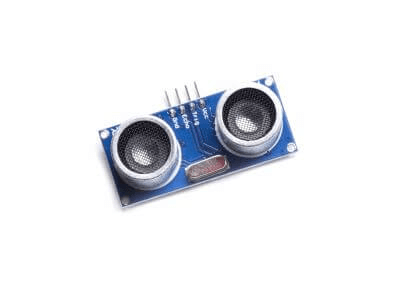What Is an Ultrasonic Sensor?

An ultrasonic sensor is a device that uses ultrasonic waves to measure the distance to an object.
Ultrasonic is a general term for sounds that have a high frequency and cannot be heard by humans. The human ear can detect frequencies between 20 Hz and 20,000 Hz, but sounds of higher frequencies are not audible to humans and are called ultrasonic.
Ultrasonic sensors generate ultrasonic waves and measure distance by detecting the reflected sound waves. In recent years, ultrasonic sensors have become more compact, lightweight, and inexpensive, and are therefore widely used.
Uses of Ultrasonic Sensors
Ultrasonic sensors are widely used in household and industrial applications. For everyday use, the advantage of non-contact distance measurement is utilized in such ways as in-vehicle rangefinders and jet towels. In-vehicle distance meters are rapidly becoming popular due to the mandatory use of collision damage reduction brakes.
Industrial applications include level gauges for wastewater tanks and chemical storage tanks. They are often used for highly corrosive liquids.
Fish finders also use ultrasonic sensors. This is an application of ultrasonic sensors that have been used for a long time.
Principle of Ultrasonic Sensors
Ultrasonic sensors measure distance by transmitting ultrasonic waves and detecting the reflected waves.
The speed of sound is determined by the atmosphere in which the sound, and is estimated to be 340 m/s in air and 1,500 m/s in water. If the propagating atmosphere is known, the distance can be converted by measuring the time it takes for the reflected wave to reach the receiving element.
The main component of ultrasonic sensors is the piezoelectric element. The piezoelectric element converts electrical energy into kinetic energy, and then back into electrical energy when pressure is applied via the reflected wave.
Therefore, the piezoelectric element performs both transmitting and receiving functions. It converts the input electrical signal into ultrasonic waves, senses the reflected waves, and outputs an electrical signal.
In principle, the advantages and disadvantages of ultrasonic sensors are as follows.
Advantages of Ultrasonic Sensors
- Non-contact detection of object distance
- Can detect transparent objects such as glass
- Possible to pass through even if there is some dirt or dust between the object and the sensor
- Ultrasonic waves are fast, so the sensor can detect moving objects
Disadvantages of Ultrasonic Sensors
- Easily affected by temperature and wind
- Soft and bumpy objects cannot be detected
The most important feature of ultrasonic sensors is that they can measure distances without contact. They are mostly used when non-contact measurement is required.